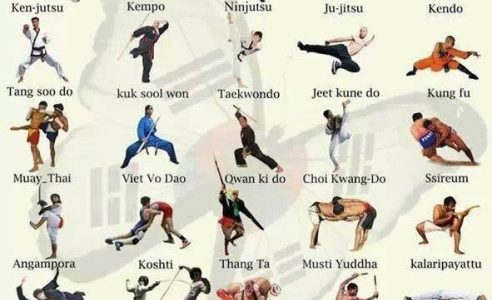Come Explore The Fascinating World Of Martial Arts, Where Old Traditions Satisfy Contemporary Efficiency - A Trip Right Into History And Philosophy Waits For.
Come Explore The Fascinating World Of Martial Arts, Where Old Traditions Satisfy Contemporary Efficiency - A Trip Right Into History And Philosophy Waits For.
Blog Article
Writer-Moesgaard Stokes
Enter the old world where martial arts were substantiated of necessity in varied regions. Cultures crafted distinct combating designs linked with historic contexts. Strategies progressed over centuries via devoted technique and social exchanges. Today, modern-day martial arts mix standard aspects for maximum effectiveness. karate classes for adults beginners , martial arts stress discipline, self-improvement, and harmony. Respect, humility, and balance are foundational principles assisting specialists in the direction of growth and strength. Explore the depths of this abundant history and approach to reveal the profound impacts shaping this enduring self-control.
Beginnings of Martial Arts
Martial arts originated in various regions all over the world, developing as sensible combat systems to resist dangers. https://www.nbcboston.com/on-air/as-seen-on/caught-on-camera-suv-crashes-through-martial-arts-studio-and-into-ravine/3061203/ battling styles were established out of need, with each society crafting techniques suited to their distinct atmospheres and obstacles. From the grappling arts of Jujutsu in Japan to the striking strategies of Kung Fu in China, martial arts were deeply linked with the historical, social, and social textile of their respective societies.
In Japan, the samurai class refined martial arts like Kenjutsu, the art of the sword, which later on advanced into the more promoted kind of Kendo. At the same time, in Brazil, Capoeira became a blend of dancing and combat, developed by enslaved Africans as a way to stand up to injustice. Each fighting style brings with it an abundant history and viewpoint, showing the worths and beliefs of individuals who practiced them.
As you delve into the origins of martial arts, you reveal a tapestry of human resourcefulness, strength, and the stubborn spirit of warriors throughout time.
Development of Techniques
Through centuries of method and improvement, fight strategies within various martial arts have gone through a profound advancement. From old styles like Martial art and Karate to much more contemporary techniques such as Brazilian Jiu-Jitsu and Krav Maga, the advancement of techniques has been driven by a combination of social impacts, sensible applications, and technical improvements.
One substantial aspect of this evolution is the cross-pollination of strategies between different martial arts. As an example, techniques from traditional Japanese Jiu-Jitsu were incorporated right into the development of Judo by Jigoro Kano in the late 19th century. This blending of designs has led to the development of crossbreed martial arts like Mixed Martial Arts (MIXED MARTIAL ARTS), which incorporate aspects of striking, grappling, and submission techniques.
Additionally, the evolution of techniques has actually been shaped by the enhancing emphasis on effectiveness and efficiency in combat. Professionals have continuously looked for to improve their techniques through rigorous training, trial and error, and competition, causing the advancement of highly specialized and reliable combating designs. In general, the advancement of strategies in martial arts mirrors the vibrant nature of fight and the ongoing mission for enhancement and innovation.
Thoughtful Structures
Checking out the underlying thoughtful principles of martial arts gives understanding into their core worths and leading beliefs. At the heart of numerous martial arts disciplines is the principle of technique itself. By training your mind and body to serve as one cohesive system, you cultivate discipline that prolongs beyond the dojo or gym right into day-to-day life. This discipline includes regard, humility, and self-discipline, shaping not simply your physical abilities but additionally your character.
An additional basic philosophical structure in martial arts is the idea of constant self-improvement. The journey of understanding a martial art is perpetual, with specialists constantly striving to better themselves, both physically and psychologically. This focus on development cultivates resilience, determination, and a growth mindset that can be put on all facets of life.
Furthermore, martial arts highlight the importance of harmony and equilibrium. Methods are designed to use a challenger's energy against them, highlighting the principle of yielding and redirecting force as opposed to fulfilling it head-on. This ideology includes social partnerships, promoting serene resolutions and mutual understanding. By welcoming these philosophical structures, martial artists not only improve their battle skills yet additionally grow a lifestyle centered on personal growth, respect, and harmony.
Conclusion
To conclude, the background and philosophy of martial arts offer a rich tapestry of custom, discipline, and self-improvement.
Consider example the tale of Bruce Lee, who changed martial arts by mixing various designs and philosophies to develop his very own distinct form of Jeet Kune Do.
With dedication and advancement, martial musicians continue to push boundaries and inspire others to reach their full potential both in battle and in life.
